Kick-off is a turning point in the game, typically occurring at the start of each half and immediately after a goal is scored.
Most teams conduct the kick-off in the same way as a positional attack, but there are some teams that use a somewhat designed method through sign play .
In fact, designing the kick-off unifies the awareness of all five players, leading to a better start to the match, and makes it easier to penetrate the attacking third; therefore, designing the kick-off is highly effective.
This time, we focus on kick-off strategies that allow for a swift transition to an attack on the opponent’s half, and we introduce some representative ones.
Block & Dribble
This is the most famous and widely used kick-off strategy.
Aim Directly for the Goal
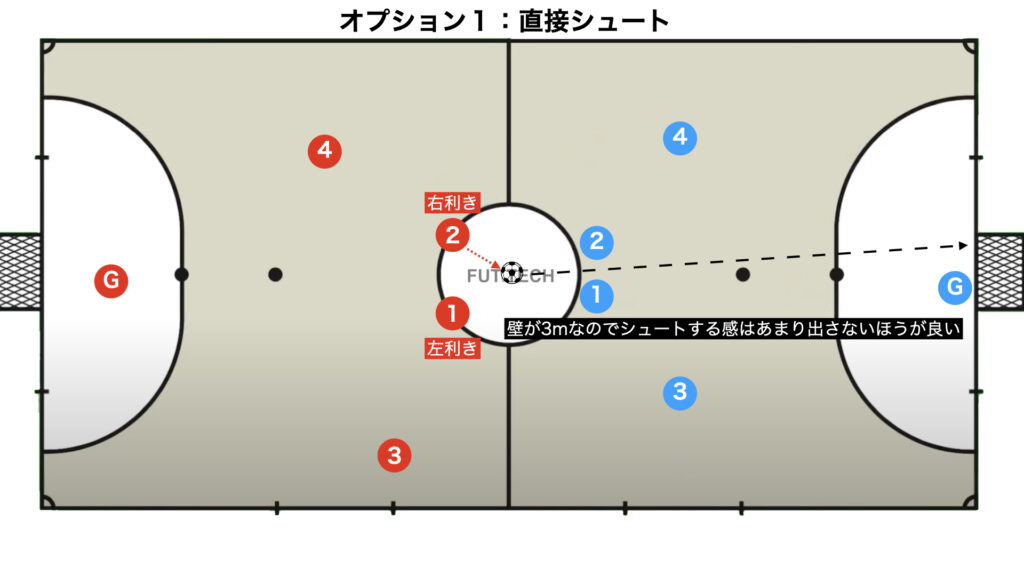
Since a direct goal is allowed on a kick-off, if you have a player with strong shooting ability, aiming directly for the goal can be effective.
Even if the ball does not go directly in, it is also effective to have the Goleiro rebound it for CK.
However, with the opposing wall set at a 3-meter radius and the shot being taken from 20 meters away from the goal, attempting a viable shot is not easy.
In such cases, applying option 2 is effective.
Block & Dribble
This sign play is a very famous kick-off strategy that is widely used around the world.
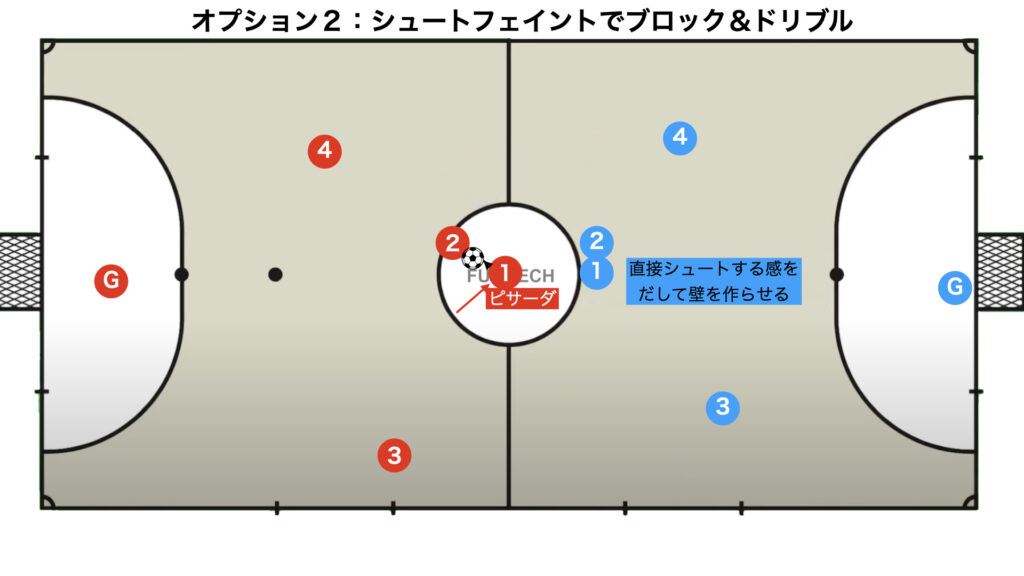
The kicker uses a shot feint to perform a pisada and initiate the play.
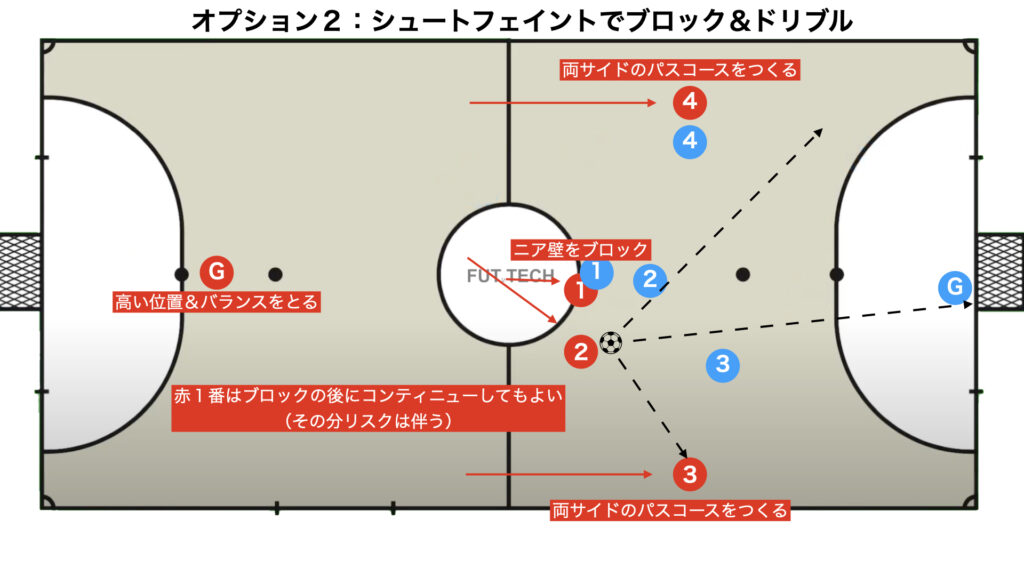
When Red No. 2 advances with a dribble, Blue No. 3 is drawn out, making it effective to use Red No. 3 in that situation.
(Local numerical superiority 2vs1)
- The kicker blocks the near wall to secure a dribble route
- Both flanks take up high positions to secure passing lanes, making it difficult for the opposing defenders to cover
- The Goleiro takes a slightly higher position, being mindful of covering.
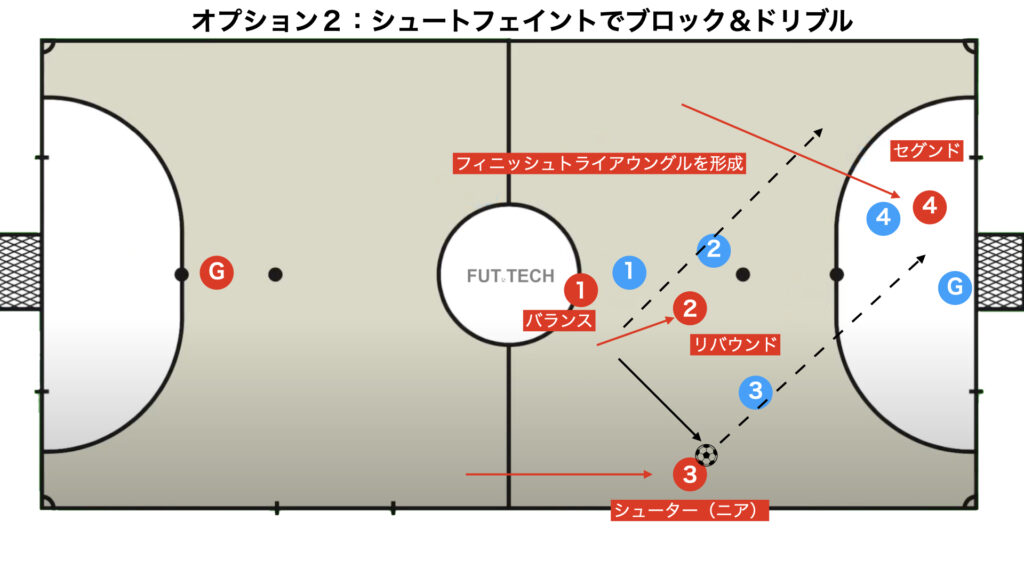
Each player assumes appropriate positioning with the finish triangle in mind.
Isolation
Ala Isolation (2-1-1)
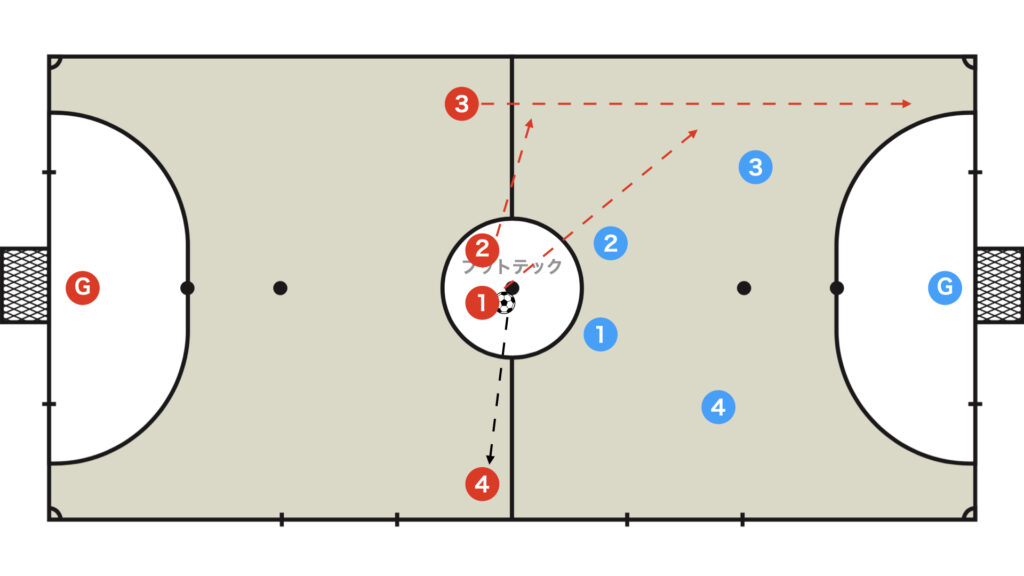
If you have a player (ala) who excels in 1v1 situations on the flank, then the ala isolation is effective.
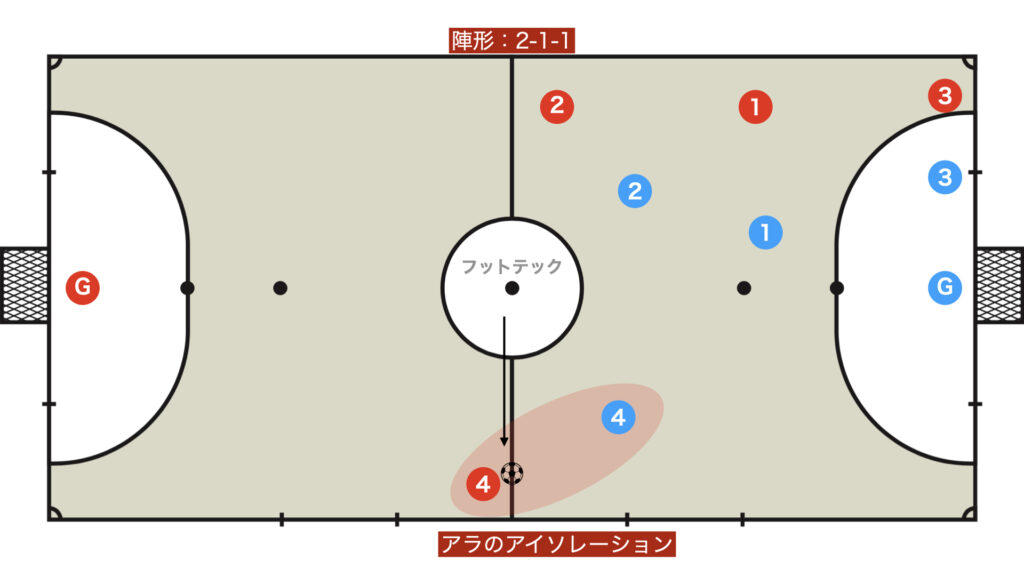
The three players, aside from the isolated ala, spread out along the flanks to form a 2-1-1 formation.
Just like in a positional attack, the ala isolation creates a qualitative advantage, allowing for a simple finish.

Fixo Isolation (1-0-3)

An isolation strategy similar to that employed by Robinho of the Russian national team and Rodrigo of Shonan Bellmare.
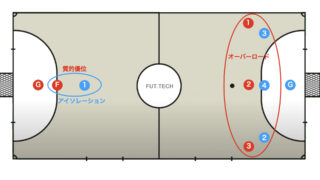
Goleiro Participation in Attack

A kick-off strategy used by Sporting.
In the first line, a 2v1 is created, allowing the Goleiro to advance with a dribble and either shoot or pass.
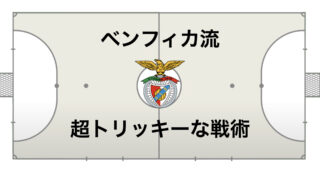
Two-Player Break from 4-0
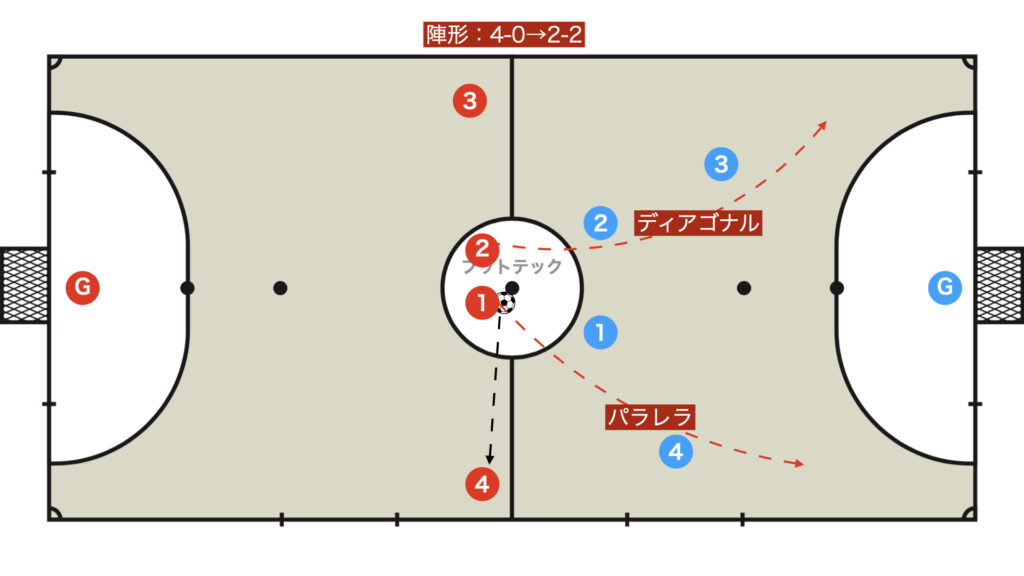
When the pass is played to the ala, the two central players break through with paralela and Diagonal.

If a pass cannot be played to the player who has broken through, that player may become the pivo—forming a 2-2—or drop back to form a 4-0 or 3-1, among various other patterns.
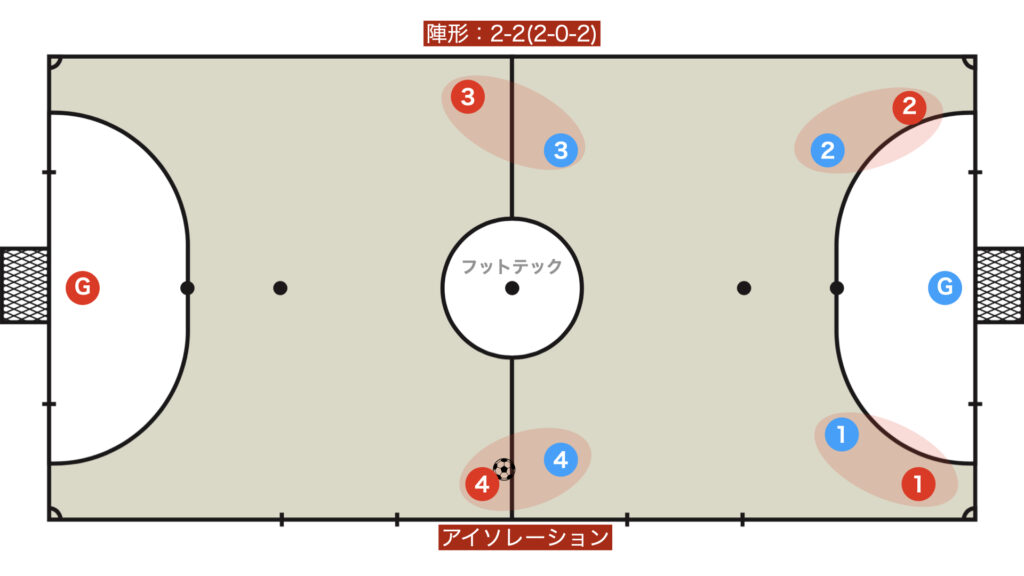
Creating a 2-2 formation isolates each player, making breakthroughs through dribbling and similar tactics easier.
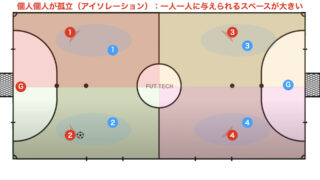
Dribble with a Fake Retreat

If you perform kick-offs that involve retreating and building up from your own half several times, there are cases where the opposing defenders become overly committed forward.
In such cases, dribbling in with a fake retreat is highly effective.
Summary
What did you think?
Although there are various other kick-off strategies, this time we have only introduced the representative ones.
Unless aiming directly for the goal, the kick-off phase is essentially the same as a positional attack, so there are as many sign plays as there are patterns in positional attack.
It is recommended that kick-off strategies are not introduced arbitrarily, but rather in accordance with the players’ characteristics (abilities) and the model the team has adopted.
We would be grateful if you could share any interesting kick-off strategies you come across.
Thank you very much for reading this article to the end.
If you found this article useful, please consider sharing it using the social media share buttons above.
We regularly share valuable insights on futsal tactics on Twitter, so if you haven’t followed us yet, we’d appreciate your support!
We are committed to raising the level of futsal in Japan by sharing high-quality information through discussions with individuals who have coaching experience in the F.League and overseas.
If you have any questions or notice any mistakes, feel free to leave a comment below.
We update our articles regularly, so if you’d like to keep reading, please bookmark our site or search for “FutTech”!